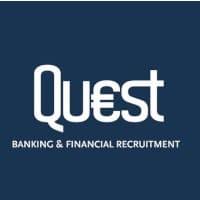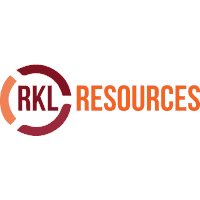Wonolo
Diveristy is a prominent challenge facing businesses today. Most employers are aware that diveristy in the workplace is important, yet many don’t realize that their workforce isn’t as diverse as they believe it to be – or as diverse as it could be.
To gain some insight into the specific challenges surrounding diversity and how employers can overcome them, we reached out to a panel of HR pros, consultants, and diversity experts and asked them to answer this question:
What’s the single biggest challenge employers face with diversity in the workplace (and how can they overcome it)?
Meet Our Panel of Business Owners, HR Pros, Founders, and Experts:
Find out what our experts had to say about the most prominent challenges employers are facing with diversity today and what you can do to overcome them by reading their responses below.
 Aqib Nazir
Aqib Nazir
Aqib Nazir is a father to a beautiful son, husband to an amazing wife, and son to a great mom with a passion for Digital Marketing. He is a PR and Outreach Expert who helps online businesses achieve their goals.
Generation gap is one of the biggest challenge employers are facing in this era…
There are those old-school guys from 50s and 60s that value meetings and encourage teamwork. And then there are millennials from 90s and onwards who prefer to stay alone and working independent.
To create a healthy workplace, it is important that you work on eliminating generation gaps. Teamwork is something that can greatly help address this problem. Embrace diversity and let your employees work together. With time, employees will manage to understand each other and respect workplace diversity.
 David Miklas
David Miklas
David Miklas was a Partner/Shareholder with the West Palm Beach and Ft. Pierce Florida law firm of Richeson & Coke, P.A., which was an AV Preeminent rated firm (peer ranking at the highest level of professional excellence). Mr. Miklas practices all types of labor and employment law exclusively representing management (employers), including both private employers, as well as Florida municipalities and school districts.
Employers may inadvertently be discriminating when they…
Advertise or recruit by the language in the ad, or where they choose to advertise/recruit.
Employers would never advertise for Whites only, but it is common for employers to run ads that have the result of having a disparate impact on older workers. As an example, in 2013, Facebook settled a discrimination case where they had a job listing that included the language, “Class of 2007 or 2008 preferred.”
Another recent problematic trend is for employers to require job candidates to be digital natives as opposed to digital immigrants, where a digital native grew up using technology from an early age rather than adopting technology later in life.
Another example is when an employer has a workforce that is not representative of the population. As an example, the local population may be comprised of 20% Hispanics and 12% Blacks and 50% women, but the employer may have a workforce that is 85% male, 95% white and nonhispanic. This may be a result of from where the employer recruits/advertises. The employer may be able to correct this imbalance by visiting traditionally Black colleges, or advertising in Hispanic publications.
 Brian Wood
Brian Wood
Bryan Wood is the lead attorney at The Wood Law Office, LLC in Chicago. Bryan focuses on employment law issues related to discrimination, harassment, civil rights, equal pay, and wrongful termination.
The biggest problem employers face with diversity is…
Building a culture that acknowledges we all have biases that we act on – consciously or
unconsciously – and building that culture without creating resentment. There is no shortage of talented, capable diverse candidates or workers, or accountability measures to ensure they receive fair opportunities. There is only unwillingness to invest the time necessary to change culture which admittedly is time-consuming, difficult, and requires strong leaders who listen more than they talk.
 Shel Holtz
Shel Holtz
Shel Holtz is principal of Holtz Communication + Technology, counseling companies on employee communication as well as digital and social media for internal and external communication. He spent 20 years in corporate communications with Fortune 500 companies before starting his consultancy in 1996. The author of six communication-themed books, Shel is a prolific blogger and pioneer podcaster. He is a Fellow of the International Association of Business Communicators, a Founding Fellow of the Society for New Communication Research, and a Platinum Fellow of The Mayo Clinic Center for Social Media.
Diversity used to be…
One of those benign values statements employers posted on conference room walls and printed on the backs of employees’ security badges. In today’s polarized political environment, diversity is now a flashpoint.
Employers increasingly are taking sides on social issues; diversity is one of those at the top of the list. Consider, for example, the number of companies that spoke out and took action against North Carolina’s transgender bathroom law. In most of those cases (as well as cases addressing gender, race, and sexual orientation), employees had not been
informed that their employer was going to take a stand. Not every employee would support the company’s position, yet those with different beliefs had little opportunity to absorb the company’s position, ask questions, or engage in a conversation about it. A once-engaged employee came to work the next day carrying a range of emotions, from apprehension (coming to work not knowing where their co-workers stand) to hostility (over their company conveying values with which they disagree).
As businesses move into a values-driven marketplace (fully 50% of consumers say they have bought or boycotted a brand based solely on a political or social position; 75% of consumers believe companies are responsible for making the world a better place by addressing social and environmental causes, not just earning profits), companies can’t make their positions known via CEOs blurting out a statement in response to legislation or a political leader’s statement. Companies need to examine their values, reiterate them, infuse their practices, processes, and supply chains with them (bolt-on Corporate Social Responsibility will no longer be enough), and have a dialogue with employees so they know the company’s values and what their options are if they disagree. The CEO can’t unexpectedly announce that employees who disagree with his position (We stand for tolerance) should simply not come to work the next day. (That happened at Grubhub immediately following the November presidential election.)
 Alina Shaffer
Alina Shaffer
Alina Shaffer is the COO for livingHR.
One of the most important and challenging aspects is…
First creating an inclusive culture where diversity lives and is leveraged to foster innovation and ultimately better business outcomes. Many organizations tend to focus on tactics first…compliance training, hiring and promoting more females and underrepresented minorities, etc. Yet, if the foundation of an inclusive culture doesn’t exist – one that welcomes new ideas, experiences and points of view – the likelihood of retaining talent is slim. Start by focusing inward to discover your talent experience with the lens of inclusion and be honest about how your culture addresses multiple facets of diversity such as embracing diversity of thought, cultivating innovation and addressing biases. From there it’s critical to get the organization buy-in and executive sponsorship needed to redesign experiences and bring them to life to create the environment where everyone can do their best work.
 Beth P. Zoller
Beth P. Zoller
Beth Zoller is an attorney and legal editor with XpertHR, specializing in topics related to discrimination and harassment, diversity, employee privacy, employee handbooks and workplace conduct.
I believe the main challenge employers face with respect to cultural diversity is…
Overcoming the deep-rooted prejudices and stereotypes that all individuals have and encouraging individuals from different backgrounds, religions, races, genders, etc. to work together. A stereotype is defined as a generalization about a person or a group of people based on preconceived judgments and thoughts that lead an individual to make an unfair judgment or assumption about that individual or situation. Similarly, a prejudice is an unfair or unfounded opinion either in favor of or against something or someone that may or may not be truthful. Such strong feelings may be difficult to
change because they are deeply rooted within an individual.
Stereotypes and prejudices can lead to various workplace challenges:
- Communication issues stemming from the failure of different groups to understand one another;
- Discrimination and stereotyping with regard to ability to do the job;
- Increased tension and conflicts between different groups;
- The tendency for individuals from similar backgrounds to stick together, hire similar individuals and choose similar individual to work on projects together; and
- Discrimination and harassment and the creation of a hostile work environment.
However, employers striving to create and maintain a diverse and inclusive workforce can take some key steps to overcome this:
Revise Recruiting and Hiring Practices. Employers should aim to reach a wide variety of potential candidates by using the internet to reach beyond their geographic area. Make sure job ads and job descriptions are neutral and bias-free to attract a wide variety of candidates. Make sure candidate are interviewed by various individuals in the organization and eliminate biased questions.
Establish Mentoring Opportunities. Provide individuals with the opportunity to be mentored by individuals who are not like them in order to improve communications and foster one on one relationships. Recognize that preconceived notions may exist and change individuals’ minds by encouraging exposure to different individuals and groups.
Provide Diversity and Sensitivity Training. It is important for an employer to encourage employees to be tolerant, respectful and accepting of differences and value and support the opinions and ideas of others. An employer should instruct employees not to focus on outward characteristics (i.e., accent, dress and appearance) and avoid snap judgments about others. An employer should emphasize civility and understanding in the workplace.
Build Relationships. An employer should aim to create cross-functional teams so that individuals from different backgrounds can work together. The focus should be on each individual’s strengths and what they can bring to the table. The employer should encourage and support participation and leadership opportunities on all levels of the organization and make employees feel as if they have a voice and a seat at the table.
Make Inclusion a Priority. It is important for an employer to go beyond diversity and strive to have an inclusive workplace. An inclusive workplace is one in which all employees feel as if they are integrated into the workplace, their differences are welcome and respected, and they are valued for the different skills and ideas that they can bring to the workplace. In a diverse and inclusive workplace, all employees are focused on working together and equally contributing toward a common goal and participating in workplace projects. An employer can support inclusion by providing reasonable accommodations to individuals from different backgrounds if justified and the need exists. An employer should be committed to providing accommodations so that employees may:
- Observe religious practices and worship;
- Live and work in the gender they identify with regardless of their sex at birth;
- Care for their families including babies and toddlers, sick children and aging parents; and
- Perform the essential functions of their job even if the individual suffers from a disability.
 Samir Gupte
Samir Gupte
Samir Gupte is the President and Chief Engagement Officer of Pope and Associates. For over 41 years, Pope has partnered with organizations to eliminate barriers to inclusion, that enable individuals, organizations, and communities to thrive.
The single biggest challenge employers face with diversity in the workplace is…
Evolving from representation to inclusion. When an organization can achieve this step in their journey, only then can they fully realize the benefits of a diverse workforce.
Over the last 40 years, companies and other organizations have made progress in increasing representation of women and minorities in their workforce. Some of this has been driven by their concerted actions, while some has been forced by demographic changes and the available talent pool, especially in these low, unemployment rate cycles.
While opportunities remain to increase the representation of women and minorities in leadership roles, creating inclusive cultures and work environments, where everyone can bring their true selves to work, are inspired to be all-in, and their ideas and contributions are sought after by leadership, remains elusive for most employers.
Training leadership on unconscious bias, assessing inclusion through the right measures, and implementing specific strategies to improve inclusive cultures is the path forward to solve this challenge.
 Steven Benson
Steven Benson
After receiving his MBA from Stanford, Steve worked in Sales at IBM, HP and Google where he was Google Enterprise’s Top Sales Executive in 2009. In 2012, he founded Badger Maps, the #1 Sales App in the Apple App Store, which helps Field Sales People be more successful.
I believe that the biggest challenge that employers face with cultural diversity in the workplace is…
Creating a culture that makes people of many diverse backgrounds comfortable from the beginning of the company’s life. If an organization starts out lopsided on gender and diversity and develops a dominant culture, it can be hard to unwind that and become a place where everyone is comfortable.
A lot of organizations look around after they’ve already grown fairly large and realize that they are massively over-represented in some demographics and massively under-represented in others. It takes a lot of effort at that point to right the ship, whereas if managers were cognizant of diversity from the beginning, they would not only have enjoyed the benefits of diversity throughout the companies entire life-cycle, but also would have a diverse organization at scale organically.
 Humphrey Ho
Humphrey Ho
Born to Chinese parents, Humphrey Ho established his reputation as a business leader early in life when he founded and sold the social network enterprise Speechbobble at age 23. Now, Humphrey has joined Hylink as Managing Director of their new US office, located in Los Angeles, CA, becoming an integral part of the company’s strategic partnerships, business development, talent deployment, internalization, and globalization processes – helping brands both in China and in the US better navigate each market.
In a diversified workplace, the biggest challenge employers face is…
Integration. To overcome this obstacle, it is essential that an employer makes an effort to understand who each employee is beyond what is apparent, and takes into account the varying experiences employees have had throughout their lives. If employers remain hyper-aware of the differences that make up their respective workplaces, they will be better able to find a middle ground and build a strong community based on shared concerns and interests.
 Amy Zimmerman
Amy Zimmerman
Amy Zimmerman is the Head of People Operations for Kabbage.
The single biggest challenge that we face at Kabbage with regards to diversity is…
That there doesn’t seem to be enough women or African American candidates in engineering. Our total diversity percentage company-wide is high, which is something we’re incredibly proud of, but as we drill in to the departments, it’s obvious that we are anything but diverse in engineering. A couple of the things that we’re doing to address this include a targeted recruiting focus both digitally and at career fairs, and we’re including unconscious bias/hiring training for all members of our interviewing team. Diversity of experience and perspective enriches culture, drives innovation, and creates value in every conceivable way.
 Joyce Wilson-Sanford
Joyce Wilson-Sanford
Joyce Wilson-Sanford has worked in the field of Strategic Organizational Development for 25 years. Joyce’s last position was as Executive Vice-President of Strategic Organizational Development for the Delhaize Group, a global food retailer. She now works as a global executive coach. She is known for the depth, insight and practicality of her coaching.
The single biggest challenge employers face with diversity in the workplace is…
Not having an articulated business case for creating a culture of inclusion and not showing that this kind of culture is good for everyone – the messy, the gay, the introvert, the African American, the white make, the wildly creative, the excruciatingly pragmatic, women, blind – the only person to exclude is one with a lack of commitment or skill for the work. Every company needs every bit of strong talent it can find in whatever package it comes.
 David Kosmayer
David Kosmayer
David Kosmayer is the Founder of Bookmark Website Builder.
I believe a diverse staff can greatly benefit a company that embraces its differences…
It starts for us with a plan of action and a manager’s willingness to spearhead the initiative. A diverse workplace brings multiple perspectives to the table. A diverse workplace also promotes a company’s ability to adapt to any situation. The benefits have been great for us.
 Dr. Aviva Legatt
Dr. Aviva Legatt
Dr. Aviva Legatt is the College and Graduate Admissions Coach and Owner of VivED Consulting LLC. She is also an Affiliated Faculty member of the University of Pennsylvania Organizational Dynamics Program. She is also a High-Performance Team Observer at the Wharton School of University of Pennsylvania.
The biggest challenge employers face with implementing practices that enhance diversity and inclusion is…
Promoting diversity beyond meeting Affirmative Action requirements. Research shows that diversity makes workplaces more effective and efficient – productive conflict around a task is more likely to occur in diverse teams, and diverse companies tend to be more profitable. It is not enough, though, to simply hire diverse people and assume that the environment will also be inclusive toward people of color, women, people with disabilities, LGBT individuals, and so forth. Inclusion is a key, but often overlooked, element to creating a successful work culture that embraces diversity.
The way to overcome this challenge is to educate hiring managers and employees on the financial, creative, and cultural benefits to creating inclusive environments. In addition, companies must implement training on unconscious bias. Companies like Facebook, LinkedIn, and Nike are implementing this training so that staff members can learn about their natural preferences toward or against certain groups of people. These preferences are not necessarily bad, but awareness helps people to understand one another and work through difference more effectively. Facing these biases is a necessary but difficult step in promoting a positive, authentic, and inclusive work environment.
 Jennifer Ward
Jennifer Ward
Recently named AZ President of MSEC, Jennifer Ward joined the team in 2014 as an employment law attorney. After receiving her law degree from the University of Southern California, Jennifer practiced law with a prominent regional Phoenix firm, and was a member with the Labor and Employment Practice Group. In 2015, she obtained her certifications as a Senior Professional in Human Resources (SPHR) and as a Society for Human Resources Management Senior Certified Professional (SHRM-SCP).
Most employers understand the importance of diversity but don’t realize that one of the biggest obstacles to achieving it is itself a lack of realization…
Unconscious bias is a phenomenon that affects almost everyone’s decision-making processes. Our past experiences affect the decisions we make and our brains create “shortcuts” to help us process information. The majority of hiring managers would say that they have an unbiased hiring process, but don’t see how these “shortcuts” affect the process. We tend to prefer people who are just like us, which undercuts diversity efforts. We also make assumptions based on stereotypes, which may lead us to turn away a qualified candidate who might increase our diversity. By examining and acknowledging their reasons for not hiring a particular candidate, hiring managers may be able to combat the effect of unconscious bias.
 Tim Toterhi
Tim Toterhi
Tim Toterhi is an ICF certified executive coach and the founder of Plotline Leadership, a company that helps people craft their success stories. He is the author of The Introvert’s Guide to Job Hunting and Chief Human Resources Officer (CHRO) with over 15 years of management experience in the Americas, Europe, and Asia.
The single biggest challenge employers face with diversity in the workplace is…
They are looking for the wrong thing. Somewhere along the way the concept of corporate diversity, or “inclusion” as it is now known, got cheapened. It got boiled down to a marketing effort where every website and annual report features a smattering of just the “right” amount of male and female, old and young, black and white… you get the idea. Some large companies even have special “leadership” programs, sidebars in talent reviews, or quota-based hiring processes to ensure “everyone” is represented. Such efforts are well-intentioned, but they just don’t work. Worse, they actually contradict what advocates hope to accomplish.
What employers should be looking for – in hiring, promotion, team composition, project leadership etc. (beyond skills and experience) – is diversity of THOUGHT (i.e., how you approach the work and what you – as an INDIVIDUAL – bring to the role). The assumption that, for example, a young, white, female brings a different point of view simply because she is young, white, and female is in itself a stereotyped / biased view that flies in the face of diversity.
Employers need to stop hyper-focusing on the external qualities and spend the time, money, and energy to look past their assumptions and strive to understand a person’s actual experience, abilities, and soft skills such as decision-making, communication, conflict management, etc. There are a variety of unbiased pre- and post-hire assessment tools that can help them do it. Training on behavior-based interviewing can also help them uncover these strengths and development areas.
The ultimate answer to diversity is individuality. It’s more relevant than culture and more revealing than sex or age. And, more meaningful than any other label. In the end you are hiring a person, not a representative of any group.
 Ian Cluroe
Ian Cluroe
Ian Cluroe is Head of Marketing for Alexander Mann Solutions, a leading recruitment process outsourcing and talent acquisition consulting firm.
Companies shouldn’t treat diversity as a standalone initiative…
It has to be integrated into the overall recruiting strategy. Otherwise, it’s possible to create the impression that diverse candidates are somehow less qualified and simply a way of fulfilling a quota. This may work in terms of meeting diversity targets, but it can have a long-term negative effect if diverse but sub-standard candidates leave the company because they couldn’t perform to expectations. Diversity has to be part of a company’s DNA – and it has to work as part of a company’s overall desire to hire the best possible people for each role.
 Jaime Baim Hansen
Jaime Baim Hansen
Jaime Baim Hansen is a writer, speaker, investor, and thought leader on diversity in business. A former economist, after spending 10+ years as a business executive working for large, public tech companies, she recently published her first book, Expanding the Conversation, which looks at business, leadership, and leveraging one’s individual strengths for a competitive advantage.
In an ironic twist, I find the single biggest challenge employers face around diversity is ultimately with company culture…
The culture of a company (which often ranks as one of the biggest indicators of employees’ happiness) is often predicated on the common interests of the people that work there. Examples include a culture that is young and hip, or more mature and serious; a culture can also be described as social, competitive, energetic and fun, etc. The very nature of diversity – bringing together people with different perspectives and experiences – can often make creating a culture that fits the majority very difficult.
The good news is – this is a short-term problem that can be helped with intentional leadership. Working towards a culture that can be enjoyed by everyone doesn’t have to revolve around similar tastes and activity interests, but can instead be lifted and defined by values. For example, instead of a work-hard / play-hard culture, a company could pride itself on a culture of creativity (which could include both hackathons to design a new product, as well as contests to name the company’s beer of the month).
 Demetria Miles-McDonald
Demetria Miles-McDonald
Demetria Miles-McDonald is an author, professional speaker, trainer, and Founder of Decide Diversity, a company focused on increasing the presence and effectiveness of women and minorities in leadership positions. Demetria specializes in bringing the experiences of intersectional people to the forefront, to better understand the strengths they bring to the workplace.
The biggest challenge employers face with diversity in the workplace is…
Looking at it as a single-dimension concept. Very few organizations have mastered diversity and inclusion because leaders are looking for solutions that increase the number of women. Then, they create solutions to increase the number of African Americans or other races or ethnicities. Then, they create solutions to increase the number of people with disabilities. Yet, none of these solutions are befitting for an African American woman with a physical disability, who faces unique challenges due to her intersectional identity. Diversity is a multi-dimensional issue that leaders have transformed into over-arching, over-simplified stereotypes that leaves many behind. Ironic, right?
It is time for leaders to shift their focus to intersectionality, or when a person identifies with more than one underrepresented or marginalized group. To accomplish this, leaders must first recognize their own intersectional identities. A nice tool to use is the Table of Diversity. This tool lists 18 different categories from which a person can choose the intersectional identities they associate themselves with. A few important questions to ask while determining your Diversity Formula is:
- Because of my intersectional identity, what is it that I can do that no one else can?
- What can I do better?
- What can I bring to a company that no one else can?
Once a leader understands their intersectional diversity, it is their responsibility to help other employees understand the intersectional diversity they and their colleagues possess. Having this foundational understanding of who you are and who your colleagues are, opens the door for greater appreciation, collaboration, and innovation. This is the first step in encouraging people to truly bring their entire selves to work.
 Robyn Tingley
Robyn Tingley
Robyn Tingley is a high-performance expert and diversity champion specializing in advice for women and Millennials, two groups that together, account for more than half of today’s workforce – and growing. In addition to building a global corporate career, Robyn launched three social enterprises before the age of 40. Her most recent project is GlassSKY that is focused on empowering women, and the next generation of leaders.
The biggest challenge employers face with diversity in the workplace is…
Getting buy-in is critical to making any D&I strategy work. HR can find the candidates and check the boxes, but unless management understands the value and importance of diversity, it will always be an uphill battle, and they won’t ever reach true inclusion of talents and experiences. In principle, people understand the need to respect others, but they don’t always take the time to understand the business case for proactively building diversity into our workplaces. This starts with understanding that diverse teams
outperform homogeneous ones, and here’s why:
1) New Perspectives. Diversity comes in many forms. Gender, ethnicity, age, sexual orientation, physical ability to name a few. People with different backgrounds and lived experiences bring new information. They will offer varying opinions on topics and ask questions that a homogeneous group might not even think to consider.
2) Better Thinking. Simply interacting with individuals who are different forces people to prepare better. Employees will anticipate that they are likely to encounter alternative viewpoints, and they will expect that it will take more effort to reach consensus. The result is that they will work harder and think more fully about issues.
3) Employee Engagement. A workforce needs to be able to relate to its leaders. If members of a leadership team look the same, talk the same, attend the same social functions, and all were educated at the same or similar universities, then people from outside that circle will find it harder to relate. When employees don’t feel included, they don’t fully engage. They scale back their talents. This significantly shortchanges an
organization of its competitiveness and of realizing the full value of employees.
4) Enhanced Customer Insight. In terms of gender diversity alone, consider this: women control 85% of the domestic buying power in the world. Most new homes, vacation destinations, food purchases, and healthcare decisions are controlled by women. Imagine organizations that include no women at the decision-making table. They are missing out on very valuable perspectives.
 Steve Pritchard
Steve Pritchard
Steve Pritchard is the HR Consultant for The London School of Make-Up.
One big challenge companies face with workplace diversity is…
That some employees are resistant to change. In many cases, some team members, young and old, are uncomfortable with accepting new working processes and a shift in workplace culture – they like what they’re used to and do not want this to change.
Initially, if you are combining different cultures in one place and need everyone to work harmoniously together, it can be difficult to reach a mutual level of professionalism and working practices.
The best method of combatting this is not to force any big changes on your staff abruptly. For the sake of making everyone feel as comfortable as possible, you should encourage communication between your team members so that employees can get to understand the different working processes of other team members.
Having an employee handbook which lays out the essentials of your company’s core ethics in terms of workplace culture is a great method of ensuring that everyone’s views are taken into consideration. Speak to your employees about what they value and need at work to feel comfortable and try to reach a common ground that will make everyone happy, achieving a culture of diversity that ensures all workers are comfortable.
 Tamara Thorpe
Tamara Thorpe
Tamara Thorpe is the Millennials Mentor; a Leadership Expert and Organizational Development Consultant. She creates leadership training programs for Millennial leaders, and helps businesses understand and leverage a multi-generational workforce. Tamara works with professionals from across the globe sharing her expertise on leadership development, diversity and inclusion, and intergenerational collaboration.
The single biggest challenge employers face with diversity is resistance…
People within organizations resist diversity initiatives for several reasons. The first is that they are most often implemented in response to a conflict so it is perceived as a punishment. Secondly, when organizations lack diversity, diversity is perceived to be about the other so initiatives are experienced as mandatory for the majority and only a problem for the minority. And lastly, it is because many people have had bad training where they have been shamed or blamed, and bad training is worse than no training.
To overcome this resistance, organizations must make a genuine investment into diversity and fostering an inclusive work place. This begins by understanding that it is not a single effort, but a long term strategic process that requires time and resources. It cannot be a one-off training or lecture, or a single hire. Organizations must make a commitment to taking a series of steps over an extended period of time to ensure success. This includes an assessment of organizational values, policies and procedures. As well as an assessment of the staff and leaderships ability to be practice inclusion, followed by the training and development necessary for everyone to develop the mind set and skill set they need to foster inclusion within their organizations.
 Pamela Torres
Pamela Torres
Pamela Torres, MS, CCC-SLP, CAS Director of Educational, Clinical and Community Outreach Services Bilingual Speech Language Pathologist at HABLA Speech Therapy, PLLC.
Hiring millennials has been our biggest diversity challenge…
As well as getting them to work effectively with non-millennials and be patient when required. In our field, processing paperwork with insurance and doctors takes time. Our older employees understand that. But the millennials seem to have a harder time dealing with waiting and working through tougher cases. We have also seen that some, not all, expect to move up faster and get promotions faster with minimal work or going beyond the minimum level of expectation. Or that entry-level applicants expect to get paid the same or more as a seasoned therapist. The solution is clear expectations, praise, and validation. But sometimes all of that still won’t work.
 Ji-A Min
Ji-A Min
Ji-A Min is the Head Data Scientist at Ideal, software that uses AI to remove unconscious bias from candidate sourcing and resume screening.
The single biggest challenge employers face with diversity in the workplace is…
Establishing personal accountability for increasing minority representation. The best way to create this accountability is to tie compensation (e.g., salary increases, bonuses) to diversity outcomes, a practice Deloitte finds only 6% of companies are currently doing.
 Bruce Holoubek
Bruce Holoubek
Bruce Holoubek, MBA, is President and Co-owner of Contracted Leadership, a company that embeds one or more of its team of professionals in management positions within organizations that need their leadership services on a contract basis. Bruce has become the expert that businesses turn to when they need to internally align their organization through organizational development, human resource management, and implementing processes and systems.
The single biggest challenge that employers face with diversity in the workplace stems from…
A lack of effective internal communication regarding the importance and value of having a diverse team. If there is any intentional or unintentional bias within the company, it likely stems from the culture of the organization, and internal communication can either perpetuate or change the company’s culture. If employers shift their mindset regarding diversity to view its positive aspect (i.e., our team will have a greater cross-section of experience and perspectives that will aid the development and completion of this project) rather than viewing diversity as a requirement imposed by an external force, they will see the benefit to building a more diverse team. In addition, it is important that employers challenge leaders and recruiters within the organization to recognize their biases as best as they can so that they can approach hiring and managing from a more self-aware, conscientious standpoint. As a result of these two shifts within an organization, diversity will be sought after and celebrated instead of seen as an obstacle.
 Stan Kimer
Stan Kimer
Stan Kimer is the President of Total Engagement Consulting.
I would say the largest challenge in organizations today is…
For company leaders to understand that everyone within an organization needs diversity and inclusion training, not just the managers. The front-line employees particularly need this training. Why? First, because relationships with peers is one of the top two factor affecting productivity and retention at work and people need to learn how to respect each other and work together. Second, it is the line employees who are most often the interface to your clients or customers, and they must know how to respectfully interact with a growing diverse clientele.
To address this, organizations simply need to invest in meaningful dynamic diversity training across the organization from top to bottom.
 Maureen Kinahan
Maureen Kinahan
Maureen Kinahan is a Recruitment & Marketing Executive with Quest Recruitment, a leading banking and financial recruitment agency in Dublin, Ireland. Prior to joining Quest, Maureen worked within the global top 5 Accounting Practice, BDO.
As a leading Banking and Financial Services Recruitment Agency in Dublin, Ireland, we see first-hand the challenges that many employers face with diversity in the workplace…
Naturally, when it comes to a professional environment, it is crucial for employers to recognize the significance of a dynamic workforce.
While America may have paved the way in accomplishing a multiplicity of diversified workplaces, Ireland has also identified the need to highlight the importance of recruiting individuals from many different backgrounds and ethnicities. Early in 2016, KPMG acknowledged the importance of a diverse workforce with Managing Partner Shaun Murphy commenting on the fact that a versatile workplace is not only the right way to go but it is the bright way to go as it ensures our country will secure the most talented people in every industry.
Although support and initiatives are in existence for maintaining a varied labor force, one of the biggest challenges employers now face is employee loss, in addition to a decrease in productivity and, in some cases, legal consequences. Unfortunately, discrimination in the workplace is still happening in Ireland with the most recent case prosecuting Tennis Ireland on the grounds of age discrimination, following the appointment of their Chief Executive.
Overcoming These Barriers
In order to overcome the challenges of discrimination which lead to employee cessation, it is imperative that companies not only address the need for parity among their staff but also alter behaviour in some cases.
So what can companies do to address this challenge?
1. Company Policy
It is vital that organizations demonstrate a sense of commitment and initiative to sustaining equality within the workplace. Given that the average worker spends a third of their day at work, employers have the power to influence their employees. Beliefs are often led by good example from Senior Management; it should come from the top down. If it is company policy, which is often included in the Employee Handbook, then one needs to behave in an appropriate manner, respecting fellow colleagues. Furthermore, it is important that the company policy is clear and is communicated to all staff in an efficient manner at the commencement of their employment.
2. Team Building Days
Team building days are a great positive way to help any team bond. More often than not, these days will typically test leadership, decision making, competitiveness and problem solving, uniting individuals as one in the process. We can vouch for this here – Quest has enjoyed numerous team building days which continuously radiate team spirit. A great way to incorporate team building exercises into the work force often is to pick a charity that your company feels strongly about and organise charity events around team building events throughout the year.
3. The Hiring Process
As mentioned with the Tennis Ireland case, the recruitment process is one that is significant when ensuring equality and fairness is incorporated right through the hiring process from the sourcing of candidates to the on-boarding process of new recruits. It is crucial for employees to understand that hiring a dynamic workplace results in a wide range of possibilities and creativity. Regardless, the Workplace Relations Commission (WRC) enforces compulsory measures to ensure fairness and equality in the appointment of new staff. Failing to meet guidelines can result in legal actions and penalty fines.
4. Training
A great initiative that a company can take on board for their staff is offering a training scheme which caters towards the practice of addressing prejudice and discrimination as well as complaints from bullying or harassment. In addition to combatting these negative outcomes, training is also substantial in preventing these negative outcomes in the first place by helping employees understand the value of diversity and how it can be managed so everyone is included and feels understood. For an interesting perspective on this, Heineken tackled the topic of ‘How to talk to your political opposite’ earlier in the year. This emotive clip has drawn the attention of millions of people and evoked a shared response of unifying individuals, though their belief’s may be a world apart.
5. Employee Cessation
In the unfortunate case where an employee may decide to cease employment with a company, exit interviews should be a natural part of a company’s strategy in order to understand the triggers that made an employee unsatisfied in their job. In the case that that triggers were thought to be harassment or victimization, employers will need this information to prosecute those who are instigators of such behaviour while also using this information to prevent such happenings from arising in the near future. Each company may act in very different ways but possessing this information gives an organization the power to make positive changes.
 Lisa Holder
Lisa Holder
Lisa co-founded AccuSource in 1999 and has a reputation for thought leadership in the employment screening industry. Under her leadership, AccuSource has experienced repetitive, annual double-digit growth. Her professional, forward-thinking approach has helped nurture her staff to grow, change and think globally.
All aspects of diversity in the workplace are important and crucial for employers to understand…
However, as we transition to a workforce dominated by younger generations, it is clearer than ever before that one of the greatest diversity challenges faced by employers is generational diversity.
Simply put, many employers fail to recognize the generation gaps existent within their workplaces. With employees spanning across up to five different generations (Silent Generation, Baby Boomers, Generation X, Millennials, and Generation Z), there have never been such stark differences between employees as there are now. These differences are felt most strongly in the workplace where practices, trainings, etc. are often led by and geared toward one generation over all others. For example, with startups, it is common for everything to be geared towards millennials; whereas a huge finance company may be more Baby Boomer-friendly.
Ultimately, generational diversity poses many challenges and lends itself to missed opportunities for employers. However, employers can combat and overcome these challenges with the following steps:
1. Get to know employees, and identify company makeup. How many employees from each generation make up your workforce?
2. Recognize the differences from one generation to another, and strive to understand what they mean to your organization. If Baby Boomers grew up with limited technology, what might this mean?
3. Identify the strengths of each demographic and develop plans to leverage these strengths.
4. Identify the weaknesses of each group.
5. Create opportunities for cross-generational mentoring, training and sharing; both across and up. How can Millennial A and Baby Boomer B collaborate to create a plan that is both cost-effective and on-par with current trends?
Essentially, these four steps will afford employers the opportunity to truly get to know their workforce(s), and use generational differences to their advantage. Rather than building a frustrating or segmented work environment, employers can leverage differences to create growth opportunities for all parties. Doing so will help mitigate on-the-job frustration, and will boost company morale significantly. After all, if Baby Boomer B knows Millennial A is going to help him/her with social media, and in return, s/he will assist Millennial A with building in-person relationships, both parties can rest assured knowing their growth is important and their job is not on the line.
 Tawanda Johnson
Tawanda Johnson
Tawanda Johnson is the President & CEO of RKL Resources, a national Human Resources Consulting Firm.
The single biggest challenge is…
That while diversity is tolerated in the workplace it isn’t truly accepted and embraced. There is a big difference between tolerating something and accepting it. Employers should spend more time making sure that senior leadership team is supportive of all diversity and inclusion work. The leadership team must set the tone for diversity acceptance in the workplace.
 Tyler Butler
Tyler Butler
Tyler Butler is the Founder & Principal of 11Eleven Consulting.
As a corporate responsibility, diversity, and inclusion practitioner…
I have created, launched, and engaged staffs through meaningful employee resource groups for years. In my expert opinion I believe that the single biggest challenge that employers face with diversity in the workplace is a lack of
understanding regarding how unconscious bias impacts employees’ behaviors and professionalism. The thought patterns, assumptions and interpretations, or biases, we have built up over time are intended to help us process information rapidly and proficiently.
Sadly, the impact is more often converse to this intention, creating a company culture where unconsciously the company’s leaders are skewed towards hiring, promoting, and supporting the people who look, think, and come from similar backgrounds as themselves. Which in turn facilitates a lack of a diversity to begin with.
Once this large topic is tackled, the next component to greater understanding is education and engagement. The opportunity to rally people from diverse backgrounds must be addressed in an authentic manner. Allowing for grass roots leaders to emerge from within the organization and providing support to them to ensure that they have the time and guidance needed to cultivate a great employee resource group. Whether this is based on gender, ethnicity, or physical prowess, it is important that someone from within each employee group is positioned as a leader and that they serve as a conduit for employees to learn from expert guest speakers and to have valuable experiences through volunteerism, and offerings such a books clubs and events. Ultimately each company must have transparency about their intentions to introduce understanding and acceptance for all types of people through clear communication and through authentic actions.
Learn More About Wonolo
![]()






